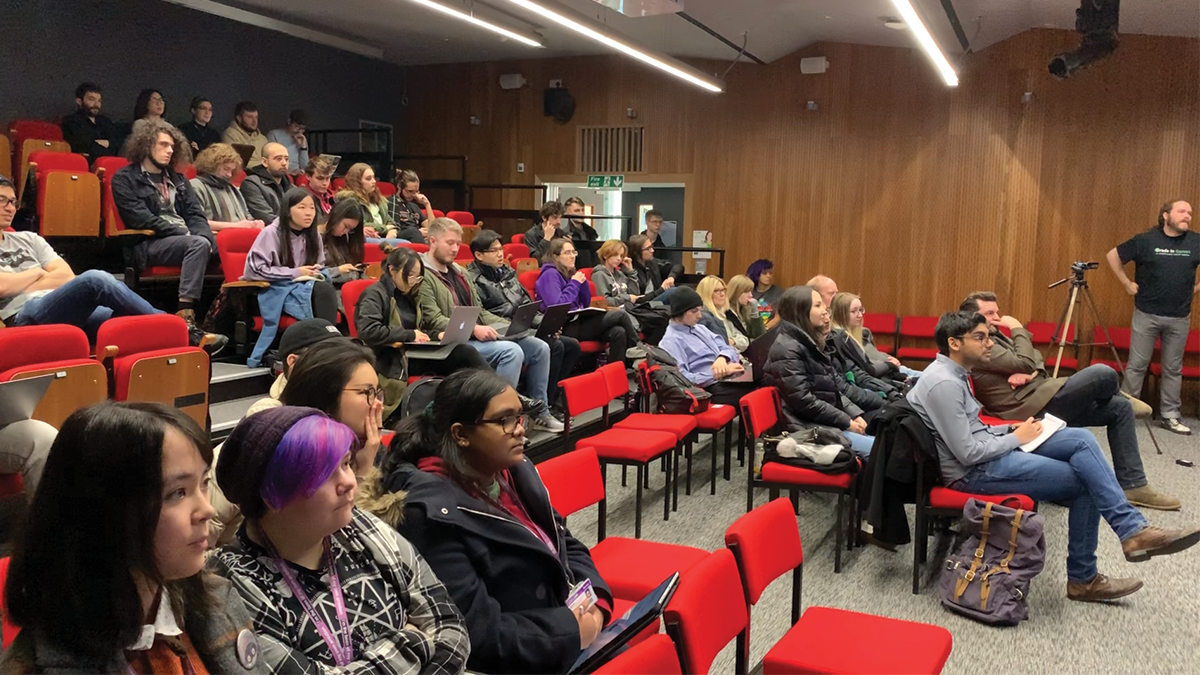How to Recruit Diversely Within the Games Industry
By James Bowers, Marketing Assistant at Aardvark Swift on 16/06/2020
Here at Aardvark Swift, we've been recruiting for the video game and related industries for over thirty years. With over 29,000 active candidates from 30+ countries, we know a thing or two about recruitment best practises, especially when it comes to ensuring that employment opportunities are both fair and accessible to a diverse range of applicant.
“People teach people, and when you have different viewpoints and opinions, you find the whole group is the better for it. Life experiences shape the skills and attitudes that candidates bring to the workplace, evolving your company voice and culture with their variety,” says Kelly Jones, our Talent and Training Manager.

Crafting a workplace that is inclusive and welcoming isn’t an overnight process. It takes an active commitment from you and your team to uphold it. The work you put in now can instigate far reaching and positive change, not just within your business, but the industry at large. But where should you start?
1. Consistent messaging: You need to include diversity throughout your company narrative. It’s not a box ticking exercise, it’s a commitment. That means your website, job descriptions, social media, and all external and internal communications need to be working towards the same goal. From imagery to language, make a concerted effort to broadcast what you preach. You won’t always get it right but being open and transparent to mistakes and learning from them is key. Highlighting diversity in the media that you share is a great place to start.
2. Culture Add: Although it might be tempting to go for a candidate who is a good culture fit because they offer a personality and background you already have within the team, acknowledge the benefit of having a different point of view brought into the business. Many people can do the job, but who can make you better? New points of view, new walks of life, and new opinions can really evolve you as a business and as people, bringing new ideas and practises you might not have even considered. Cast your recruitment net wider by attending more niche job fairs or networking events. Start from the grass roots and get help from professionals who know the landscape; including the graduate space and/or other areas of the creative industries to source diverse talent.
3. Be mindful of off-putting jargon: Getting the messaging right on your website, job listings, and social media can feel a little intimidating, but it doesn’t have to be. Do your research, take a course, ask professionals. Avoid using language that alienates certain demographics. Big words are cool, but you don’t want to talk yourself out of some of the best talent out there! Excessive business speak, for example, has been proven to put off younger candidates from underprivileged backgrounds.
4. Offer remote positions where possible: Not everybody has the privilege of flexibility, and making allowances for this will enable the best talent to be attracted to your roles, regardless of background, race, health, living arrangement, identity, or age. An office job isn’t an option for everyone. That doesn’t mean they wouldn’t be the best hire you’ve ever made. Make it very clear in the job description that remote work is an option, don’t assume those who are interested will wait to be told that during the interview; they just won’t apply. Even if remote work isn’t possible for your business full-time, modernise your company policies and have something in place for religious/cultural holidays, and make the relevant allowances for carers, disabilities, mental health, and parents.
Especially with current work from home conditions being the norm during the global pandemic, companies both within the industry and beyond are looking at how working practises can be adapted to future-proof their projects and protect their staff. With many studios having worked effectively from a remote platform, it may well be that we see more of these vacancies surface over the coming months and years. This will certainly aid in the diversification of candidates.
5. Quantify it: Decide on the metrics you want to improve and set a time-frame. If you need to work on your own internal diversity, what does that look like over the next six months? Don’t take on more than you can handle at once, you need to decide what’s achievable. Don’t be shy about shouting about your plans either! Transparency in diversity is very much appreciated by all. You can roll this into public campaigns and join networking groups and initiatives for support. If you’re public about it, the support groups might even come to you.
“Social and moral reasons aside, we have a huge skills shortage in the industry which has been going on for as long as I can remember. The system is currently rigged in favour of university level applicants, which historically have been predominantly white and middle-class,” adds Ian Goodall, Managing Director of Aardvark Swift.

It’s important that change is instigated throughout the games industry, otherwise a cultural shortage will be added to the skills draught we are experiencing. These risks could be compounded nationally by our move away from the European Union, making it harder for developers from Europe to work within the UK indefinitely. This means it’s more important than ever to appeal to a broader audience both at home and abroad.
“It starts at a grass roots level, in primary schools, secondary schools, and colleges. Sparking that interest at an early age, to students from a broad spectrum of backgrounds, is vital. Many people think a career in video games is an unattainable pipe dream [especially when they don’t see themselves represented within it], we need to fix that,” confirms Ian. “Our Grads in Games initiative has historically worked exclusively with universities, but we’ve expanded that this year to include FE colleges. 16 to 18-year-olds can now get practical CV and portfolio advice at an earlier age, from ourselves and our studio partners. Giving people the tools to succeed as early as possible is important. That’s why we’re also supporting Into Games and their Side Quest initiative, which aims to get 100,000 13 to 19-year-olds into game development. It’s about making information and tools accessible to people, regardless of their background.”
A lot has changed since we first started out with our grass roots work fifteen years ago. There was a time where the industry wasn’t as receptive to students. “We’ve proven how strong a lot of these young developers are. We’ve taken a lot of students who would have been lost to the games industry, who just didn’t have the tools or the information to succeed, and helped them break into a career they love. Creating a stronger and more diverse youth pipeline is essential for the future of the industry,” concludes Ian.

Work has already begun in this regard with the development of gaming-focused apprenticeships through Trailblazer initiatives; which are a collection of companies within an industry who are brought together to form an apprenticeship standard. It will allow a more diverse pool of people, who don’t have the desire or means to go to university, to break into the industry by learning and earning on the job.
You don’t have to wait to make a difference. Make diversity a core principle of your business. Think about starting your own work experience or internship program for minority or underprivileged youth and speak to your local council or colleagues for assistance. Listen and learn. Above all, don’t be afraid to ask for help.